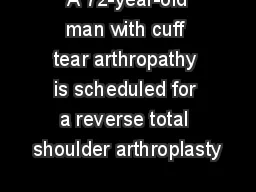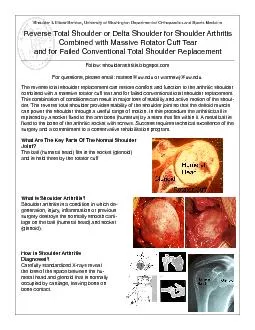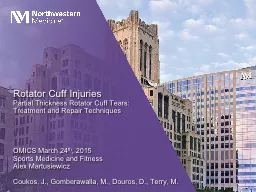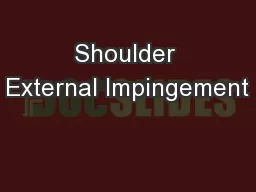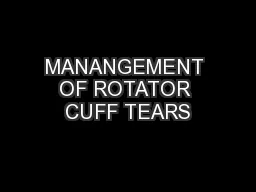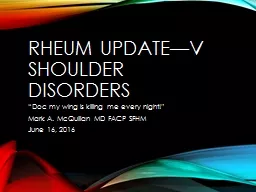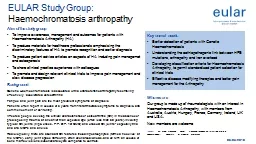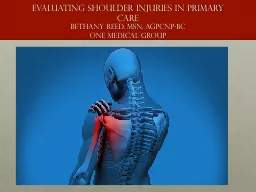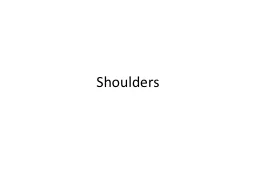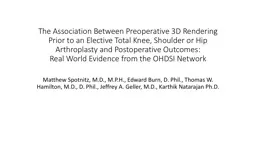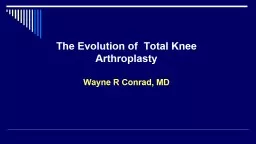PPT-A 72-year-old man with cuff tear arthropathy is scheduled for a reverse total shoulder
Author : briana-ranney | Published Date : 2020-04-04
Pseudoparalysis Anterosuperior escape Positive drop arm sign Positive Hornblowers test result Passive external rotation to 0 degrees 9162015 1 9162015 2 Answer
Presentation Embed Code
Download Presentation
Download Presentation The PPT/PDF document " A 72-year-old man with cuff tear arthro..." is the property of its rightful owner. Permission is granted to download and print the materials on this website for personal, non-commercial use only, and to display it on your personal computer provided you do not modify the materials and that you retain all copyright notices contained in the materials. By downloading content from our website, you accept the terms of this agreement.
A 72-year-old man with cuff tear arthropathy is scheduled for a reverse total shoulder: Transcript
Download Rules Of Document
" A 72-year-old man with cuff tear arthropathy is scheduled for a reverse total shoulder"The content belongs to its owner. You may download and print it for personal use, without modification, and keep all copyright notices. By downloading, you agree to these terms.
Related Documents

